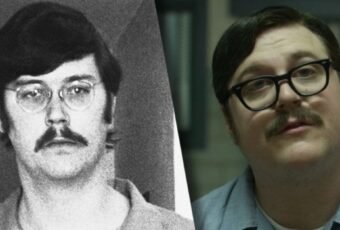Leonarda Cianciulli may not have been as notorious as other serial killers such as Ted Bundy or Ed Gein, but she was still a monstrous individual. She was known as the “Soap-maker of Correggio” for her murders of three women in Correggio, Reggio Emilia between 1939 and 1940, and for subsequently turning their bodies into soap and teacakes.
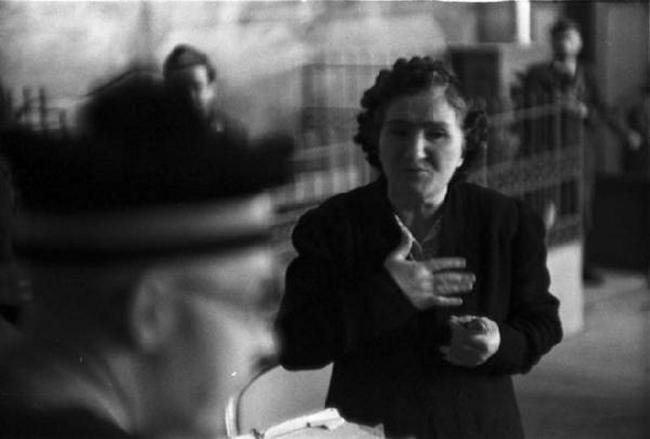
Leonarda Cianciulli was an Italian serial Killer, better known as the “Soap-maker of Correggio,” she murdered three women in the town of Correggio, Reggio Emilia, between 1939 and 1940, and turned their bodies into soap and teacakes.
Early Life of Leonarda Cianciulli
Leonarda Cianciulli was born on October 15, 1893, as a result of pregnancy due to rape. This accounts for the lack of love and poor treatment she received from her mother, who was forced to marry her rapist. The emotional neglect Leonarda experienced from her mother led to not one, but two separate suicide attempts.
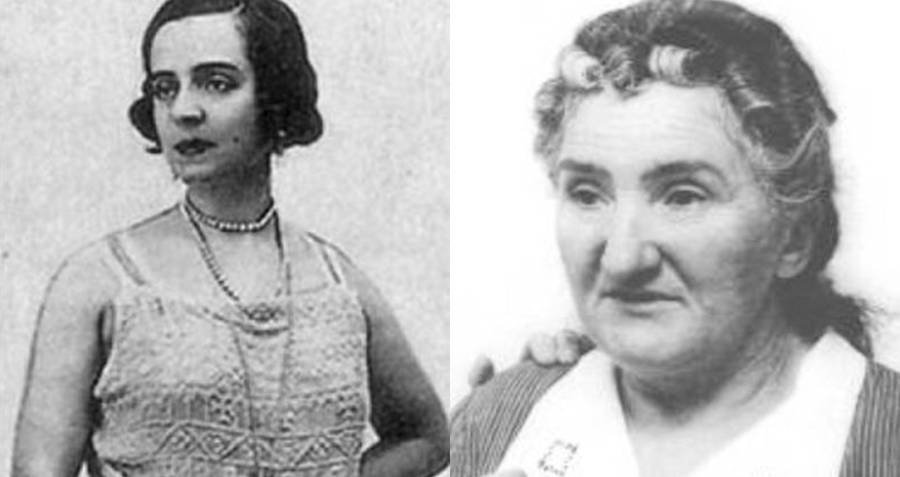
In 1914, Leonarda Cianciulli married Raffaele Pansardi, a registry office clerk, but her parents were against the marriage and had already planned for her to marry another man. Leonarda believed that her mother had cursed her and that nothing good would happen in her life. As a result, by going against her parent’s wishes, she was no longer welcome in the family home and was forced to move with her husband to Lauria.
The couple’s honeymoon was short-lived as Leonarda was charged with fraud and sent to prison in 1927. Upon her release, the couple moved once again.
The brief sense of peace that Leonarda and her husband had found after their move was short-lived. In 1930, a devastating earthquake struck the house they had just moved into, with a magnitude of 6.6 and over 1,400 deaths. The couple was left helpless and had to gather what they could and move to their final destination.
During her marriage, Leonarda had seventeen pregnancies, three of which resulted in miscarriage. Ten more children died in their youth, which may explain the intense protectiveness of her four surviving children. Leonarda was particularly protective of her son, Giuseppe, whom she considered her favorite child.
She was a superstitious woman and believed in spells and magic. Before her marriage, Leonarda had visited a fortune teller who warned her that she would have children but that they would all die before her. This fear intensified when Italian men, including Leonarda’s son, were drafted to fight in World War II in 1939.
Leonarda Cianciulli’s love for her son
The fear of losing her children consumed Leonarda’s thoughts and she believed that the only way to prevent it was by sacrificing another human soul, believing it would take her son’s place in the afterlife.
In her search for answers, Leonarda consulted another fortune teller. This practitioner of palm reading told her that “In your right hand I see the prison, in your left a criminal asylum.” Despite this ominous prophecy, Leonarda placed her son’s well-being above any foretold future and devised a twisted plan to keep him alive.
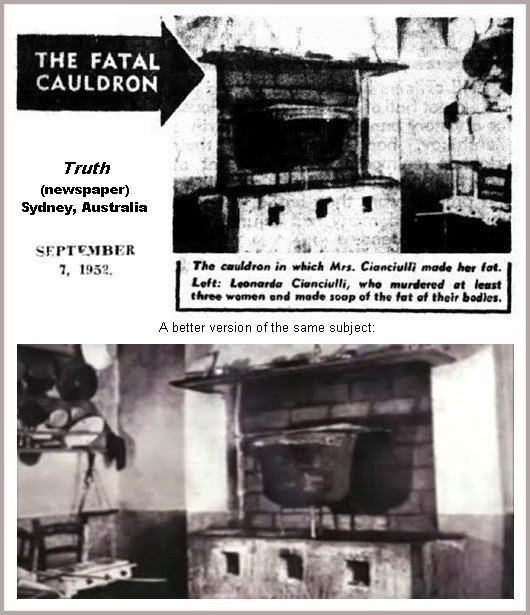
Leonarda Cianciulli also worked as a fortune teller and preyed on middle-aged women who were in a vulnerable state.
The first victim of Leonarda, Faustina Setti
The first of Leonarda Cianciulli’s victims, Faustina Setti, was an unmarried woman who had come to her in search of a husband. Leonarda told her about a suitable match in Pola but convinced her to keep the news a secret.
She convinced Setti to write letters and postcards to her family and friends, which were to be mailed once she reached Pola.
On the day of her departure, Setti visited Leonarda, where she was offered drugged wine, and then killed with an axe. Leonarda dragged the body into a closet and cut it into nine parts, collecting the blood in a basin to make disposal quicker and easier.
Leonarda Cianciulli and her modus operandi
“I threw the pieces into a pot, added seven kilos of caustic soda, which I had bought to make soap, and stirred the whole mixture until the pieces dissolved in a thick, dark mush that I poured into several buckets and emptied in a nearby septic tank. As for the blood in the basin, I waited until it had coagulated, dried it in the oven, ground it, and mixed it with flour, sugar, chocolate, milk, and eggs, as well as a bit of margarine, kneading all the ingredients together. I made lots of crunchy tea cakes and served them to the ladies who came to visit, though Giuseppe and I also ate them.”— In her memoir, Leonarda Cianciulli described what happened to Faustina Setti in her official statement.
Second victim
Leonarda Cianciulli trapped her second victim, Francesca Soavi, by convincing her that she had found her a job at a school for girls in Piacenza. Like Setti, Soavi was persuaded to send letters to her friends. Similarly to the first killing, Leonarda drugged Soavi with wine and killed her with an ax. Soavi’s body was given the same treatment as Setti’s.
Third victim
In her memoir, Leonarda wrote that she particularly enjoyed consuming her third victim, Virginia Cacioppo. She described “She ended up in the pot like the other two…her flesh was fat and white, when it had melted I added a bottle of cologne, and after a long time on the boil, I was able to make some most acceptable creamy soap. I gave bars to neighbors and acquaintances. The cakes, too, were better: that woman was really sweet.”
Investigation and Trial of Leonarda Cianciulli
With the disappearance of three women, questions began to arise in the town. Virginia’s sister-in-law was particularly worried and needed answers about her whereabouts. When she asked around, she was told that Virginia was last seen entering Leonarda’s house.
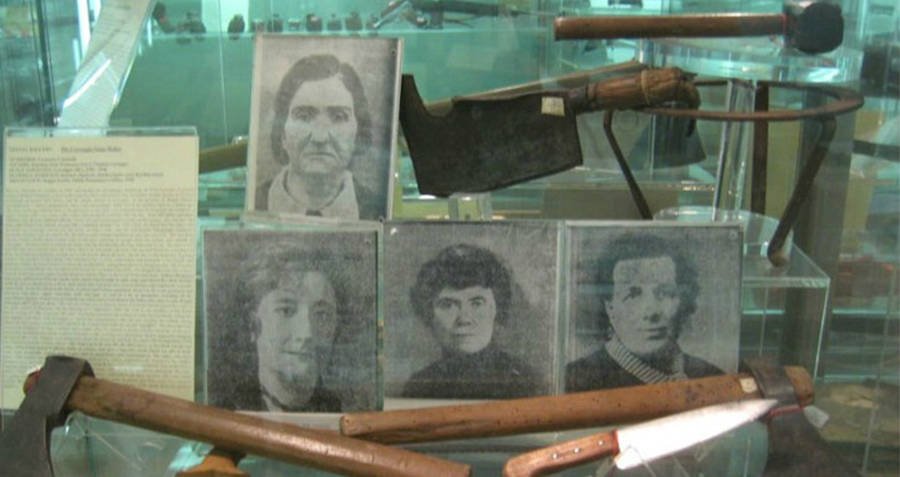
The authorities were involved and an investigation took place. Leonarda was quickly arrested and confessed to the murders after discovering that her son, Giuseppe, had also been arrested as a possible accomplice. Because of the unusual nature of the case, many people were eager to watch the trial unfold in court.
Due to the unique and shocking nature of the case, many people were interested in following the trial in court. Leonarda Cianciulli was tried for the murder of Reggio Emilia in 1946 and remained unrepentant throughout the proceedings, even going as far as to correct the official account while on the stand.
At her trial in Reggio Emilia, last week Poetess Leonarda gripped the witness-stand rail with oddly delicate hands and calmly set the prosecutor right on certain details. Her deep-set dark eyes gleamed with a wild inner pride as she concluded: “I gave the copper ladle, which I used to skim the fat off the kettles, to my country, which was so badly in need of metal during the last days of the war….”
She was found guilty of her crimes and was sentenced to 30 years in prison and 3 years in a criminal asylum. Cianciulli died of cerebral apoplexy in the women’s criminal asylum in Pozzuoli on October 15, 1970. A number of artifacts from the case, including the pot in which the victims were boiled, are on display at the Criminological Museum in Rome.
Read more from the website.







